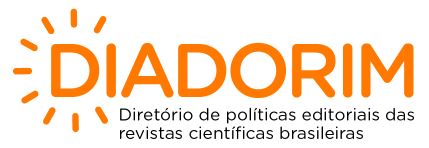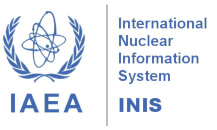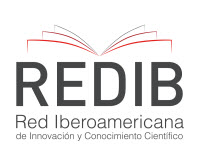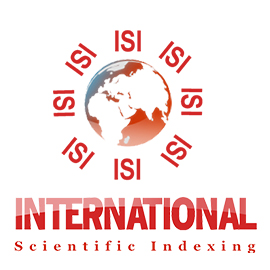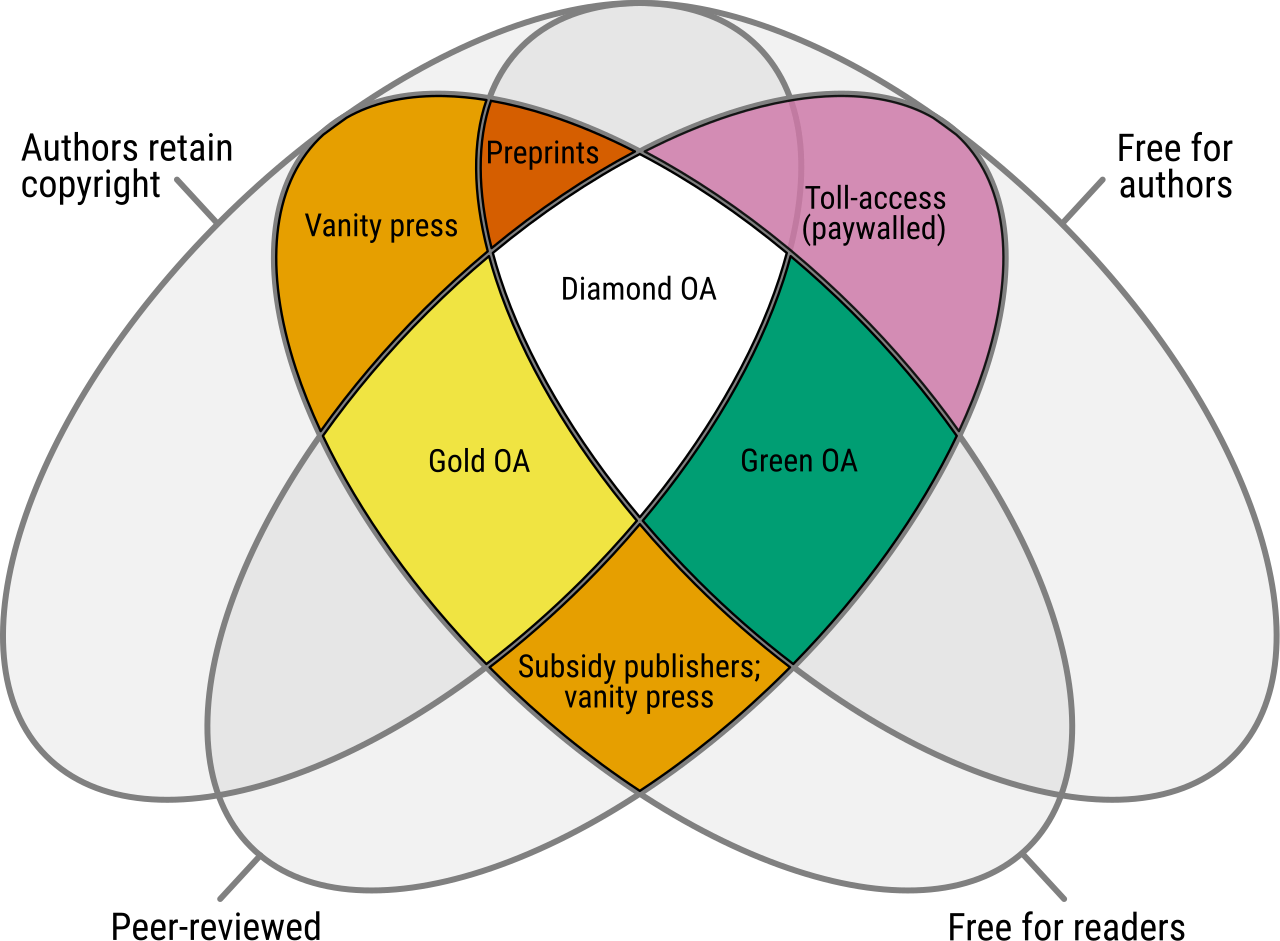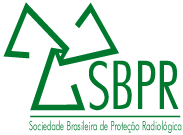Progresso no Design de Novos Detectores de Nêutrons Baseados em Gás: Uma Revisão Crítica
DOI:
https://doi.org/10.15392/2319-0612.2025.2893Palavras-chave:
Detecção de nêutrons, detectores gasosos, hélio-3Resumo
A detecção de nêutrons por meio de detectores gasosos é uma prática consolidada há décadas, com aplicações significativas em reatores nucleares e no monitoramento por organizações internacionais responsáveis pela salvaguarda do uso da energia nuclear. Historicamente, esses detectores utilizavam Hélio-3 (He-3) como gás de ionização devido à sua confiabilidade, segurança, facilidade de uso, insensibilidade à radiação gama e alta eficiência na detecção de nêutrons térmicos. No entanto, a escassez na oferta de He-3 criou uma necessidade urgente de desenvolver novos detectores de nêutrons baseados em gás que não dependam desse isótopo. Embora avanços tecnológicos significativos tenham sido alcançados, ainda existem desafios, particularmente na melhoria da sensibilidade e resolução dos detectores e no aprimoramento de sua capacidade de discriminar entre nêutrons e outras formas de radiação, como a radiação gama. Em resposta a essas demandas, o presente estudo tem como objetivo revisar os avanços recentes no desenvolvimento de detectores de nêutrons baseados em gás que possam substituir os detectores baseados em Hélio-3. A revisão foca nas vantagens dessas novas tecnologias, especialmente em termos de eficiência de captura de nêutrons e resposta linear em uma ampla faixa de energias. Esta análise foi conduzida por meio de uma revisão crítica da literatura científica, com foco em artigos publicados em periódicos científicos entre 2015 e 2024. A evolução dos detectores gasosos é examinada, desde as tecnologias disponíveis em 2015 até as inovações mais recentes em detectores de nêutrons gasosos. As conclusões destacam melhorias substanciais na eficiência de detecção e na resolução dos detectores, juntamente com avanços na discriminação de partículas. Há também uma tendência crescente para a miniaturização dos dispositivos e a exploração de novas técnicas de dopagem para aumentar a sensibilidade e reduzir os custos. Conclui-se que, apesar dos avanços significativos alcançados no desenvolvimento de detectores de nêutrons baseados em gás, ainda há muito espaço para melhorias. Áreas como miniaturização de dispositivos, uso de novos dopantes, análise de custo-benefício e aplicação desses detectores em novos campos ainda oferecem oportunidades substanciais para inovação e desenvolvimento.
Downloads
Referências
[1] KOUZES, R. T. The 3He Supply Problem. Pacific Northwest National Laboratory, Richland, WA, PNNL-18388, 2009.
[2] U.S. Department of Energy’s Office of Nuclear Physics. Status of the Domestic and International Helium-3 (3He) Shortage. National Isotope Development Center Newsletter, Oak Ridge, TN, March 2014.
[3] COOPER, R. G. SNS Detector Plans. Nuclear Instruments and Methods in Physics Research A, Amsterdam, v. 529, n. 1-3, p. 394-398, 2004. DOI: https://doi.org/10.1016/j.nima.2004.05.018
[4] HENZLOVA, D. et al. Current Status of Helium-3 Alternative Technologies for Nuclear Safeguards. Los Alamos National Laboratory, Los Alamos, NM, LA-UR-15-21201, 2015.
[5] United States Government Accountability Office (GAO). Neutron detectors: Alternatives to using helium-3. Government Accountability Office, Washington, DC, GAO-11-753, 2011.
[6] PICKRELL, M. M. et al. The IAEA Workshop on Requirements and Potential Technologies for Replacement of 3He Detectors in IAEA Safeguards Applications. Journal of the Institute of Nuclear Materials Management, Deerfield, IL, v. 41, n. 2, p. 14-29, 2013.
[7] KOUZES, R. T. et al. Boron-10 Based Neutron Coincidence Counter for Safeguards. IEEE Transactions on Nuclear Science, Piscataway, NJ, v. 61, n. 5, p. 2608-2618, 2014. DOI: https://doi.org/10.1109/TNS.2014.2353619
[8] LINTEREUR, A. T. et al. Alternatives to Helium-3 for Neutron Multiplicity Counters. 2012 IEEE Nuclear Science Symposium and Medical Imaging Conference Record (NSS/MIC), Anaheim, CA., p. 547-553, 2012. DOI: https://doi.org/10.1109/NSSMIC.2012.6551168
[9] KITCHENHAM, B. Guidelines for performing Systematic Literature Reviews in Software Engineering, Version 2.3. EBSE Technical Report EBSE-2007-01, Keele University and University of Durham, 2007.
[10] JAMIL, M. et al. Thermal neutron response of a boron-coated GEM detector via GEANT4 Monte Carlo code. Applied Radiation and Isotopes, v. 95, p. 90–93, 2015. DOI: https://doi.org/10.1016/j.apradiso.2014.09.023
[11] KIM, H. G. et al. Thermal neutron simulation response of GEM-based detectors with the FLUKA-MC package. Measurement, v. 60, p. 71–77, 2015. DOI: https://doi.org/10.1016/j.measurement.2014.09.076
[12] CELENTANO, G. et al. 10B enriched film deposited by e-beam technique on Al2O3 substrate for high efficiency thermal neutron detector. Surface and Coatings Technology, v. 265, p. 160–165, 2015. DOI: https://doi.org/10.1016/j.surfcoat.2015.01.041
[13] AZA, E. et al. Neutron beam monitoring for time-of-flight facilities with gaseous detectors. Nuclear Instruments and Methods in Physics Research Section A: Accelerators, Spectrometers, Detectors and Associated Equipment, v. 806, p. 14–20, 2015. DOI: https://doi.org/10.1016/j.nima.2015.09.054
[14] FLIERL, B. et al. TPC-like readout for thermal neutron detection using a GEM-detector. Nuclear Instruments and Methods in Physics Research Section A: Accelerators, Spectrometers, Detectors and Associated Equipment, v. 824, p. 528–531, 2016. DOI: https://doi.org/10.1016/j.nima.2015.11.094
[15] LI, K. et al. Study of a nTHGEM-based thermal neutron detector. Chinese Physics C, v. 40, n. 7, p. 076002, 2016. DOI: https://doi.org/10.1088/1674-1137/40/7/076002
[16] ALBANI, G. et al. Evolution in boron-based GEM detectors for diffraction measurements: from planar to 3D converters. Measurement Science and Technology, v. 27, n. 11, p. 115902, 2016. DOI: https://doi.org/10.1088/0957-0233/27/11/115902
[17] SANTONI, A. et al. Physical–chemical characterization of a GEM side-on 10B-based thermal neutron detector and analysis of its neutron diffraction performances. Nuclear Instruments and Methods in Physics Research Section A: Accelerators, Spectrometers, Detectors and Associated Equipment, v. 906, p. 83–87, 2018. DOI: https://doi.org/10.1016/j.nima.2018.07.045
[18] CROCI, G. et al. I-BAND-GEM: a new way for improving BAND-GEM efficiency to thermal and cold neutrons. The European Physical Journal Plus, v. 134, n. 4, p. 166, 2019. DOI: https://doi.org/10.1140/epjp/i2019-12522-5
[19] ZHOU, J. et al. Highly efficient GEM-based neutron detector for China Spallation Neutron Source. Nuclear Instruments and Methods in Physics Research Section A: Accelerators, Spectrometers, Detectors and Associated Equipment, v. 953, p. 163051, 2020. DOI: https://doi.org/10.1016/j.nima.2019.163051
[20] FANG, Z. et al. Study of uniform drift electric field used for boron-lined honeycomb neutron detector. Nuclear Instruments and Methods in Physics Research Section A: Accelerators, Spectrometers, Detectors and Associated Equipment, v. 954, p. 161431, 2020. DOI: https://doi.org/10.1016/j.nima.2018.10.109
[21] ALBANI, G. et al. High-rate measurements of the novel BAND-GEM technology for thermal neutron detection at spallation sources. Nuclear Instruments and Methods in Physics Research Section A: Accelerators, Spectrometers, Detectors and Associated Equipment, v. 957, p. 163389, 2020. DOI: https://doi.org/10.1016/j.nima.2020.163389
[22] ZHOU, J. et al. A sealed ceramic GEM-based neutron detector. Nuclear Instruments and Methods in Physics Research Section A: Accelerators, Spectrometers, Detectors and Associated Equipment, v. 995, p. 165129, 2021. DOI: https://doi.org/10.1016/j.nima.2021.165129
[23] ZHOU, J. et al. A stopping layer concept to improve the spatial resolution of gas-electron-multiplier neutron detector. Chinese Physics B, v. 31, n. 5, p. 050702, 2022. DOI: https://doi.org/10.1088/1674-1056/ac398e
[24] YANG, T. et al. A Novel Method to Improve the Spatial Resolution of GEM Neutron Detectors With a Stopping Layer. IEEE Transactions on Nuclear Science, v. 69, n. 1, p. 68–77, 2022. DOI: https://doi.org/10.1109/TNS.2021.3135929
[25] EDWARDS, N. S. et al. Neutron sensitivity of 10B4C-coated aluminum honeycomb using a single-anode wire, P-10 continuous-gas-flow proportional counter. Nuclear Instruments and Methods in Physics Research Section A: Accelerators, Spectrometers, Detectors and Associated Equipment, v. 898, p. 85–89, 2018. DOI: https://doi.org/10.1016/j.nima.2018.04.046
[26] MURARO, A. et al. Directionality properties of the nGEM detector of the CNESM diagnostic system for SPIDER. Nuclear Instruments and Methods in Physics Research Section A: Accelerators, Spectrometers, Detectors and Associated Equipment, v. 916, p. 47–50, 2019. DOI: https://doi.org/10.1016/j.nima.2018.10.187
[27] ANJOMANI, Z. et al. Development of a multi-element microdosimetric detector based on a thick gas electron multiplier. Nuclear Instruments and Methods in Physics Research Section A: Accelerators, Spectrometers, Detectors and Associated Equipment, v. 847, p. 117–124, 2017. DOI: https://doi.org/10.1016/j.nima.2016.11.051
[28] VAHSEN, S. E. et al. 3-D tracking in a miniature time projection chamber. Nuclear Instruments and Methods in Physics Research Section A: Accelerators, Spectrometers, Detectors and Associated Equipment, v. 788, p. 95–105, 2015. DOI: https://doi.org/10.1016/j.nima.2015.03.009
[29] PISCITELLI, F. et al. The Multi-Blade Boron-10-based neutron detector for high intensity neutron reflectometry at ESS. Journal of Instrumentation, v. 12, n. 03, p. P03013–P03013, 2017. DOI: https://doi.org/10.1088/1748-0221/12/03/P03013
[30] MAURI, G. et al. Fast neutron sensitivity of neutron detectors based on Boron-10 converter layers. Journal of Instrumentation, v. 13, n. 03, p. P03004–P03004, 2018. DOI: https://doi.org/10.1088/1748-0221/13/03/P03004
[31] QIU, L. et al. Simulation and optimization of the boron-lined MWPC neutron detectors. Radiation Detection Technology and Methods, v. 5, n. 1, p. 42–52, 2021. DOI: https://doi.org/10.1007/s41605-020-00216-7
[32] LIU, L. et al. Realization of a thin boron layer neutron beam monitor. Nuclear Instruments and Methods in Physics Research Section A: Accelerators, Spectrometers, Detectors and Associated Equipment, v. 1045, p. 167632, 2023. DOI: https://doi.org/10.1016/j.nima.2022.167632
[33] BOUGAMONT, E. et al. Neutron spectroscopy with the Spherical Proportional Counter based on nitrogen gas. Nuclear Instruments and Methods in Physics Research Section A: Accelerators, Spectrometers, Detectors and Associated Equipment, v. 847, p. 10–14, 2017. DOI: https://doi.org/10.1016/j.nima.2016.11.007
[34] GIOMATARIS, I. et al. Neutron spectroscopy: The case of the spherical proportional counter. Nuclear Instruments and Methods in Physics Research Section A: Accelerators, Spectrometers, Detectors and Associated Equipment, v. 1045, p. 167590, 2023. DOI: https://doi.org/10.1016/j.nima.2022.167590
[35] TEIMOORY, E. et al. Development and characterization of fission chamber neutron detectors in Isfahan miniature neutron source reactor. Radiation Physics and Chemistry, v. 215, p. 111360, 2024. DOI: https://doi.org/10.1016/j.radphyschem.2023.111360
[36] GIOVANNETTI, M. et al. uRANIA: A micro-Resistive WELL for neutron detection. Nuclear Instruments and Methods in Physics Research Section A: Accelerators, Spectrometers, Detectors and Associated Equipment, v. 1042, p. 167432, 2022. DOI: https://doi.org/10.1016/j.nima.2022.167432
[37] GIOVANNETTI, M. et al. Thermal neutron detection based on resistive gaseous devices. Nuclear Instruments and Methods in Physics Research Section A: Accelerators, Spectrometers, Detectors and Associated Equipment, v. 1069, p. 169837, 2024. DOI: https://doi.org/10.1016/j.nima.2024.169837
[38] TSILEDAKIS, G. et al. A large high-efficiency multi-layered Micromegas thermal neutron detector. Journal of Instrumentation, v. 12, n. 09, p. P09006–P09006, 2017. DOI: https://doi.org/10.1088/1748-0221/12/09/P09006
[39] DIAKAKI, M. et al. Development of a novel segmented mesh MicroMegas detector for neutron beam profiling. Nuclear Instruments and Methods in Physics Research Section A: Accelerators, Spectrometers, Detectors and Associated Equipment, v. 903, p. 46–55, 2018. DOI: https://doi.org/10.1016/j.nima.2018.06.019
[40] QI, B. et al. Measurement of the neutron beam profile of the Back-n white neutron facility at CSNS with a Micromegas detector. Nuclear Instruments and Methods in Physics Research Section A: Accelerators, Spectrometers, Detectors and Associated Equipment, v. 957, p. 163407, 2020.
[41] LEE, K. B. et al. Development of neutron detection systems at the NDPS of RAON. Nuclear Instruments and Methods in Physics Research Section B: Beam Interactions with Materials and Atoms, v. 541, p. 65–68, 2023. DOI: https://doi.org/10.1016/j.nimb.2023.05.019
[42] ZHANG, Y. et al. Track identification and reconstruction in fast neutron detection by MPGD. Nuclear Instruments and Methods in Physics Research Section A: Accelerators, Spectrometers, Detectors and Associated Equipment, v. 906, p. 68–76, 2018. DOI: https://doi.org/10.1016/j.nima.2018.08.015
[43] MARGATO, L. M. S. et al. Timing resistive plate chambers for thermal neutron detection with 3D position sensitivity. Nuclear Instruments and Methods in Physics Research Section A: Accelerators, Spectrometers, Detectors and Associated Equipment, v. 1052, p. 168267, 2023. DOI: https://doi.org/10.1016/j.nima.2023.168267
[44] MOON, D.-H. et al. Development of a fast neutron monitoring detector for the NDPS neutron TOF facility by using Parallel Plate Avalanche Counters. Nuclear Instruments and Methods in Physics Research Section A: Accelerators, Spectrometers, Detectors and Associated Equipment, v. 1066, p. 169653, 2024. DOI: https://doi.org/10.1016/j.nima.2024.169653
[45] DIAN, E. et al. Neutron activation and prompt gamma intensity in Ar/CO 2 -filled neutron detectors at the European Spallation Source. Applied Radiation and Isotopes, v. 128, p. 275–286, 2017. DOI: https://doi.org/10.1016/j.apradiso.2017.06.003
[46] NASIR, R. et al. Experimental and theoretical study of BF 3 detector response for thermal neutrons in reflecting materials. Nuclear Engineering and Technology, v. 50, n. 3, p. 439–445, 2018. DOI: https://doi.org/10.1016/j.net.2017.12.014
[47] MONTAG, B. W. et al. Recent progress in the commercialization of the Li Foil multi-wire proportional counter neutron detectors. Radiation Physics and Chemistry, v. 155, p. 158–163, 2019. DOI: https://doi.org/10.1016/j.radphyschem.2018.08.003
[48] NELSON, K. A. et al. A modular large-area lithium foil multi-wire proportional counter neutron detector. Radiation Physics and Chemistry, v. 116, p. 165–169, 2015. DOI: https://doi.org/10.1016/j.radphyschem.2015.03.044
[49] EDWARDS, N. S. et al. Neutron sensitivity of 6Li-based suspended foil microstrip neutron detectors using Schott Borofloat® 33 microstrip electrodes. Radiation Physics and Chemistry, v. 147, p. 70–76, 2018. DOI: https://doi.org/10.1016/j.radphyschem.2018.02.013
[50] SONG, D. et al. Neutron Detection Using a Gadolinium-Cathode Gas Electron Multiplier Detector. Journal of the Korean Physical Society, v. 76, n. 11, p. 961–966, 2020. DOI: https://doi.org/10.3938/jkps.76.961
[51] DUMAZERT, J. et al. Gadolinium for neutron detection in current nuclear instrumentation research: A review. Nuclear Instruments and Methods in Physics Research Section A: Accelerators, Spectrometers, Detectors and Associated Equipment, v. 882, p. 53–68, 2018. DOI: https://doi.org/10.1016/j.nima.2017.11.032
[52] WANG, X.-D. et al. Study on the novel neutron-to-proton convertor for improving the detection efficiency of a triple GEM based fast neutron detector. Chinese Physics C, v. 39, n. 2, p. 026001, 2015. DOI: https://doi.org/10.1088/1674-1137/39/2/026001
[53] CROCI, G. et al. Performance of a Medium-Size Area nGEM Detector for Neutron Beam Diagnostics. Physics Procedia, v. 62, p. 118–123, 2015. DOI: https://doi.org/10.1016/j.phpro.2015.02.022
[54] LIU, L. et al. Method for stabilizing the detection efficiency of grazing angle incidence boron-lined neutron detectors. Journal of Instrumentation, v. 19, n. 05, p. P05032, 2024. DOI: https://doi.org/10.1088/1748-0221/19/05/P05032
[55] AMARO, F. D. et al. Novel concept for neutron detection: proportional counter filled with 10B nanoparticle aerosol. Scientific Reports, v. 7, n. 1, p. 41699, 2017. DOI: https://doi.org/10.1038/srep41699
[56] DUARTE, N. F. V. et al. Operational properties of fine powder aerosol as radiation detection medium in gaseous proportional counters. Nuclear Instruments and Methods in Physics Research Section A: Accelerators, Spectrometers, Detectors and Associated Equipment, v. 942, p. 162392, 2019. DOI: https://doi.org/10.1016/j.nima.2019.162392
[57] MUFTI, S. et al. Salient features, response and operation of Lead-Free Gulmarg Neutron Monitor. Nuclear Instruments and Methods in Physics Research Section A: Accelerators, Spectrometers, Detectors and Associated Equipment, v. 813, p. 74–83, 2016. DOI: https://doi.org/10.1016/j.nima.2016.01.019
[58] WANG, Y. et al. Readout for a large area neutron sensitive microchannel plate detector. Nuclear Instruments and Methods in Physics Research Section A: Accelerators, Spectrometers, Detectors and Associated Equipment, v. 784, p. 226–231, 2015. DOI: https://doi.org/10.1016/j.nima.2014.12.058
[59] YU, L. et al. Multiplexing readout method based on switch arrays for position sensitive thermal neutron detectors. Journal of Instrumentation, v. 13, n. 11, p. P11011–P11011, 2018. DOI: https://doi.org/10.1088/1748-0221/13/11/P11011
[60] HÖGLUND, C. et al. Stability of 10B4C thin films under neutron radiation. Radiation Physics and Chemistry, v. 113, p. 14–19, 2015. DOI: https://doi.org/10.1016/j.radphyschem.2015.04.006
[61] DESAI, S. S.; RAO, M. N. Effect of temperature on performance of Boron Trifluoride (BF3) gas-based neutron proportional counters. Radiation Measurements, v. 144, p. 106593, 2021. DOI: https://doi.org/10.1016/j.radmeas.2021.106593
[62] REICHENBERGER, M. A. et al. Monte Carlo simulation of random, porous (foam) structures for neutron detection. Radiation Physics and Chemistry, v. 130, p. 186–195, 2017. DOI: https://doi.org/10.1016/j.radphyschem.2016.08.021
[63] GALLI, G. et al. A new discriminating high temperature fission chamber filled with xenon designed for sodium-cooled fast reactors. Nuclear Instruments and Methods in Physics Research Section A: Accelerators, Spectrometers, Detectors and Associated Equipment, v. 968, p. 163947, 2020. DOI: https://doi.org/10.1016/j.nima.2020.163947
[64] HAMRITA, H. et al. Rejection of partial-discharge-induced pulses in fission chambers designed for sodium-cooled fast reactors. Nuclear Instruments and Methods in Physics Research Section A: Accelerators, Spectrometers, Detectors and Associated Equipment, v. 848, p. 109–113, 2017. DOI: https://doi.org/10.1016/j.nima.2016.11.055
Downloads
Publicado
Edição
Seção
Licença
Direitos autorais (c) 2025 Diogenes Kreusch Filho, Luan Lino Caetano, Ary Machado de Azevedo, Wallace Vallory Nunes

Este trabalho está licenciado sob uma licença Creative Commons Attribution 4.0 International License.
Declaro que o presente artigo é original, não tendo sido submetido à publicação em qualquer outro periódico nacional ou internacional, quer seja em parte ou em sua totalidade. Declaro, ainda, que uma vez publicado na revista Brazilian Journal of Radiation Sciences, editada pela Sociedade Brasileira de Proteção Radiológica, o mesmo jamais será submetido por mim ou por qualquer um dos demais co-autores a qualquer outro periódico. Através deste instrumento, em meu nome e em nome dos demais co-autores, porventura existentes, cedo os direitos autorais do referido artigo à Sociedade Brasileira de Proteção Radiológica, que está autorizada a publicá-lo em meio impresso, digital, ou outro existente, sem retribuição financeira para os autores.
Licença
Os artigos do BJRS são licenciados sob uma Creative Commons Atribuição 4.0 Licença Internacional, que permite o uso, compartilhamento, adaptação, distribuição e reprodução em qualquer meio ou formato, desde que você dê o devido crédito ao (s) autor (es) original (is) e à fonte, forneça um link para a licença Creative Commons, e indique se mudanças foram feitas. As imagens ou outro material de terceiros neste artigo estão incluídos na licença Creative Commons do artigo, a menos que indicado de outra forma em uma linha de crédito para o material. Se o material não estiver incluído no licença Creative Commons do artigo e seu uso pretendido não é permitido por regulamentação legal ou excede o uso permitido, você precisará obter permissão diretamente do detentor dos direitos autorais. Para visualizar uma cópia desta licença, visite http://creativecommons.org/licenses/by/4.0/




